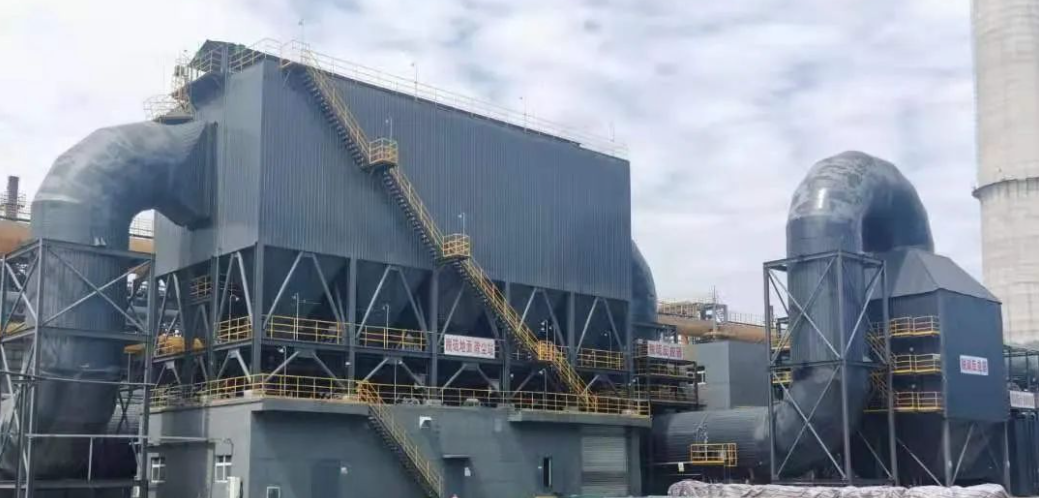
Detailed Explanation and Application Suggestions for Pulse-Jet Bag Filter Cleaning Technology
Technology Principle and Core Mechanism
The Pulse-Jet Bag Filter is one of the most widely used high-efficiency dust removal devices in the industrial field. Its core cleaning mechanism relies on compressed air pulse-jet technology. This technology releases high-pressure compressed air (usually 0.4-0.6 MPa) instantly. This action forms a high-speed air flow pulse. The pulse penetrates the dust layer on the filter bag surface. It makes the dust layer separate from the filter bag surface. The dust then falls into the hopper. This process regenerates the filter bag.
The cleaning process has three stages:
Compressed Air Injection Stage: The solenoid pulse valve opens. Compressed air enters the filter bag interior through the blow pipe. The air enters in a short pulse (0.1-0.2 seconds).
Induced Air Flow Formation Stage: The jet flow forms a high-speed stream inside the filter bag. It induces surrounding secondary air flow (about 5-7 times the jet air volume) to enter the filter bag. This creates an instant expansion effect.
Dust Removal Stage: The air flow causes strong vibration and deformation in the filter bag. The dust layer separates from the filter bag due to inertia. This completes the cleaning.
Technology Advantages:
- High Efficiency: The cleaning efficiency reaches over 99%. It maintains low resistance operation for the filter bag over a long time.
- Energy Saving: The cleaning cycle is long. Compressed air consumption is low (single pulse uses about 0.1-0.3 Nm³).
- Strong Adaptability: It suits high-temperature (≤260°C), high-humidity, corrosive gas, and sticky dust conditions.
Key Technical Parameters and Optimization Directions
1.Pulse Pressure Control
- Low Pressure Pulse (0.2-0.3 MPa): This suits lightweight filter materials (like polyester fiber). It can extend filter bag life. But the cleaning strength is lower.
- High Pressure Pulse (0.4-0.6 MPa): This suits heavy filter materials (like fiberglass) or high dust concentration conditions. Operators must balance pressure and filter bag mechanical strength.
- Optimization Suggestion: Use CFD simulation to find the best pulse pressure. Avoid excessive pulse pressure damaging the filter bags.
2.Pulse Duration and Frequency
- Pulse Duration: Usually set at 0.1-0.2 seconds. A longer duration causes over-expansion of the filter bag and shortens its life.
- Pulse Frequency: Adjust it dynamically based on dust concentration and filter bag differential pressure (Start cleaning when differential pressure rises to 1.5-2.0 kPa).
- Optimization Suggestion: Use an intelligent differential pressure control system. Combine timed cleaning and differential pressure cleaning modes. This reduces energy consumption.
3.Blow Pipe and Venturi Tube Design
- Blow Pipe Aperture: It must match the filter bag diameter (Usually 1/5 to 1/6 of the filter bag diameter). This ensures even air flow distribution.
- Venturi Tube Structure: It can enhance the induced air flow effect and improve cleaning efficiency. But pay attention to pressure drop control.
- Optimization Suggestion: Use experiments to determine the best blow pipe length and hole spacing. Avoid air flow deviation.
Typical Application Scenarios and Selection Suggestions
1.Steel Industry
- Condition Characteristics: High-temperature flue gas (150-200°C), contains iron ore powder and iron oxide scale.
- Selection Suggestion: Use high-temperature resistant filter materials (like P84, aramid). Use pre-coating technology to reduce dust adhesion.
2.Cement Industry
- Condition Characteristics: High dust concentration (≥100 g/Nm³), contains calcium-based dust.
- Selection Suggestion: Choose anti-condensation filter materials (like membrane-coated polyester). Strengthen the hopper heating device to prevent caking.
3.Waste Incineration Industry
- Condition Characteristics: Corrosive gases (containing HCl, SOx), need for dioxin control.
- Selection Suggestion: Use PTFE filter materials or acid-alkali resistant composite filter materials. Use an activated carbon injection system.
4.Chemical Industry
- Condition Characteristics: Flammable and explosive dust, toxic gases.
- Selection Suggestion: Choose anti-static filter materials. Install a nitrogen protection system and explosion-proof devices.
Operation, Maintenance, and Fault Prevention
1.Daily Maintenance Points
- Compressed Air Quality: Ensure the oil-water separator and dryer work normally. Keep oil content in compressed air ≤ 0.1 mg/m³.
- Filter Bag Condition Monitoring: Check filter bags for damage regularly (Perform fluorescent powder leak detection every 6 months).
- Hopper Cleaning: Prevent dust buildup in the hopper causing bridging or blockage. Install rapping devices or air cannons.
2.Common Faults and Solutions
- Filter Bag Damage: Causes include excessive pulse pressure, dust scouring, chemical corrosion. Solutions: Adjust pulse parameters, replace with corrosion-resistant filter material.
- Decreased Cleaning Efficiency: Causes may include blocked blow pipe, faulty pulse valve. Solutions: Clean the blow pipe regularly, replace failed pulse valves.
- Abnormal Differential Pressure: Check for blocked filter bags, hopper dust buildup, or air leakage. Solutions: Strengthen pre-treatment, repair air leakage points.
Technology Development Trends and Outlook
Intelligent Upgrade: Integrate IoT technology. Achieve real-time monitoring and self-adjustment of differential pressure, temperature, and pulse parameters.
New Material Application: Develop nanofiber filter materials, graphene composite filter materials. Improve filtration precision and temperature resistance.
Energy Saving Optimization: Use frequency conversion to control compressed air supply. Reduce cleaning energy consumption (Expected to reduce air consumption by 20%-30%).
Modular Design: Promote standardized, modular production of dust collectors. Shorten installation time and reduce maintenance costs.
Conclusion
The Pulse-Jet Bag Filter is a core device for industrial dust control. Its cleaning efficiency and operational stability directly affect environmental compliance and production safety. Optimizing technical parameters, strengthening operation and maintenance management, and following technology development trends can further improve equipment performance. This provides strong support for industrial green transformation.


